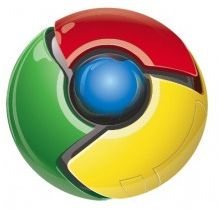 There's been a lot of buzz in the blogosphere since Google announced the Chrome OS last week. For those of you who didn't follow the discussions, the Chrome OS is an experience-targeted cloud OS that has the potential to push the boundaries and definition of the alternative operating environment. According to Google's blog post, the Chrome OS is specifically targeted towards the netbook class device. While there's still lots of questions about the OS, the idea has potential. I think it will be interesting to see what the interaction between Chrome OS and Android will ultimately be within the cloud. Given that Google has made it clear that the Chrome OS will be available in the second half of 2010, there's still a lot of time to see how this will develop. As with most new technology, Dell plans to evaluate the Chrome OS and other alternative operating environments, like we've done in the past. Luckily (for me!), Dell enjoys a great relationship with Google. As we have more details to share on the topic, we'll do it here.
There's been a lot of buzz in the blogosphere since Google announced the Chrome OS last week. For those of you who didn't follow the discussions, the Chrome OS is an experience-targeted cloud OS that has the potential to push the boundaries and definition of the alternative operating environment. According to Google's blog post, the Chrome OS is specifically targeted towards the netbook class device. While there's still lots of questions about the OS, the idea has potential. I think it will be interesting to see what the interaction between Chrome OS and Android will ultimately be within the cloud. Given that Google has made it clear that the Chrome OS will be available in the second half of 2010, there's still a lot of time to see how this will develop. As with most new technology, Dell plans to evaluate the Chrome OS and other alternative operating environments, like we've done in the past. Luckily (for me!), Dell enjoys a great relationship with Google. As we have more details to share on the topic, we'll do it here.
Alternative operating systems, continue to evolve, flourish and prosper. Over the last 18 months, we have seen Linux and its derivatives make their way into the hands of consumers (hooray!!). We have also seen smartphone and MID operating systems such as Android and the Palm Pre's WebOS showing signs of enthusiasm and prosperity. It's a wonderful time to witness and participate in such a renaissance within the PC and small device industry. These alternative operating environments are truly "different" from the traditional Windows platform – they don't attempt to simply "mimic" Windows.
Alternative operating system provide users with an focused experience: highlighting a particular feature – such as web browsing, email, or media consumption. Within Dell, we call this an "experience-targeted" platform as it represents the primal focus of the alternative environment: direct and focus the user towards a specific set of features (or "experiences" in marketing terms). Most alternative operating environments also come with this "focused" feature. As is typically the case, these alternative operating environments are not Windows compatible – they do not run the standard Windows/Win32 applications that are so common. This can be seen as a disadvantage. However, these alternative operating environments attempt to address this shortcoming by focusing their feature set with a self-directed experience: entice and direct the user to its strengths.
Moblin is the next evolutionary step of the traditional Linux environment where focus on smaller devices and small screens is a requirement. It takes a different approach to its user experience from either Dell's current offering or Ubuntu Netbook Remix by further simplifying the self-directedness of the desktop – no user guide should be needed to learn how to use Moblin. Additionally, Moblin replaces some of the traditional Linux applications, such as media players, browsers, etc…, with equivalent versions that have been specifically optimized to align with this new design behavior/look and feel of Moblin. Applications take up the entire desktop in Moblin (because screen real estate is a premium in these kinds of devices). Hence, applications that are optimized around that behavior provide a greater user experience over the traditional Linux version of the same application. Moblin continues this theme by providing a new simplified network connectivity manager – one that again, looks and behaves like a more integrated application within the Moblin desktop. Like our Linux offering on Mini netbooks and UNR, simplicity is a key design element in Moblin. Users of Moblin see a targeted feature set (browsing, social networking/email, media) and the entire Moblin desktop directs and focuses the user on those features. Dell is very interested in Moblin at present and is working very closely with its key Moblin partners (Intel and Canonical) investigating potential offerings.
Add this all up, and down the road this means that customers will have all kinds of choices on the OS side. If you're into open source options, I predict lots of exciting times ahead for us all!